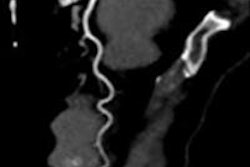The utilization rate of cardiac catheterization is higher in the U.S. than in Canada, but the diagnostic yield of the procedure is lower, according to a study to be published in the Journal of the American Medical Association.
Dr. Dennis Ko, from the Institute for Clinical Evaluative Sciences in Toronto, and colleagues evaluated the extent of obstructive coronary artery disease and compared the probability of detecting it among patients undergoing cardiac catheterization in New York and Ontario. Ko's team included patients without a history of cardiac disease who underwent elective cardiac catheterization between October 2008 and September 2011. A total of 18,114 patients from New York and 54,933 from Ontario were included (JAMA, July 10, 2013, Vol. 310:2).
The observed rate of obstructive coronary artery disease (CAD) was significantly lower in New York, at 30.4%, than in Ontario, at 44.8%. In New York, 2.5% of patients who underwent cardiac catheterization had left main stenosis, 5.2% had three-vessel coronary artery disease, and 7% had left main or three-vessel disease. In Ontario, 5% of patients had left main stenosis, 9.8% had three-vessel coronary artery stenosis, and 13% had left main or three-vessel disease.
The team's analysis of the data showed that patients who received cardiac catheterization in New York had a significantly lower predicted probability of obstructive CAD than those in Ontario.
"Our group has previously shown that clinicians in New York state perform twice as many cardiac catheterizations per capita as are performed in Ontario, which could be explained by a difference in the burden of coronary artery disease or by a difference in the patient selection process for procedures," the authors wrote. "Given the increasing focus on how best to use scarce healthcare resources, it is important to understand the reasons underlying the different utilization patterns and their associated implications."



















